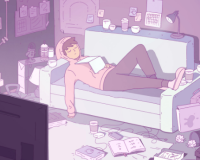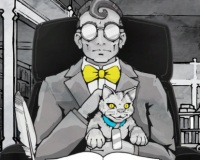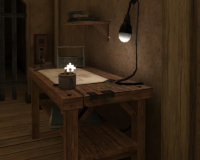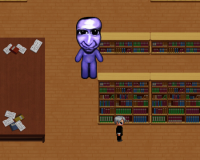
Advertisement
Stay With Him
Stay With Him is a short horror experience built around a simple task that gradually becomes unsettling. The player takes the role of a babysitter who spends the night in a remote cabin, expecting routine work. Instead, the setting begins to reveal details that disturb the sense of safety. The game avoids complexity, using minimal actions and a confined space to create tension that feels both personal and inescapable.
The Role Of The Cabin
The cabin serves as the primary stage and is central to the way Stay With Him delivers unease. Its isolation is important: there is no one nearby, no help available, and no way to escape the responsibility given to the babysitter. What begins as an ordinary building changes through sound design, lighting, and small inconsistencies. Each shift forces the player to question what is normal and what has been altered.
Gameplay Loop
Stay With Him relies on first-person perspective, limited interaction, and observation. The player explores the cabin, listens to the environment, and reacts to events as they occur. The game’s short runtime—around twenty minutes—keeps the pacing tight and ensures that tension builds steadily from start to finish.
Key features include:
- A confined first-person setting in the cabin
- Exploration and listening as core mechanics
- A reliance on sound to create unease
- A brief session designed for one sitting
- Multi-platform availability across Windows, macOS, and Linux
Themes And Style
The game’s horror is psychological, not physical. There are no fights, no obvious enemies, and no escape routes. Instead, the discomfort grows from silence, from footsteps that do not belong, or from shadows that shift without explanation. The babysitter role underlines responsibility: you cannot simply walk away, and staying becomes a form of vulnerability. The player is made to feel that the danger is not in what is seen but in what is suggested.
Stay With Him succeeds because of its restraint. By keeping its scope narrow, it forces players to pay close attention to small details, turning ordinary moments into threats. Its atmosphere lingers after completion, leaving questions unanswered and tension unresolved. The game shows that horror does not need spectacle to be effective—sometimes all it takes is a cabin, silence, and the feeling that you are not truly alone.
















































































